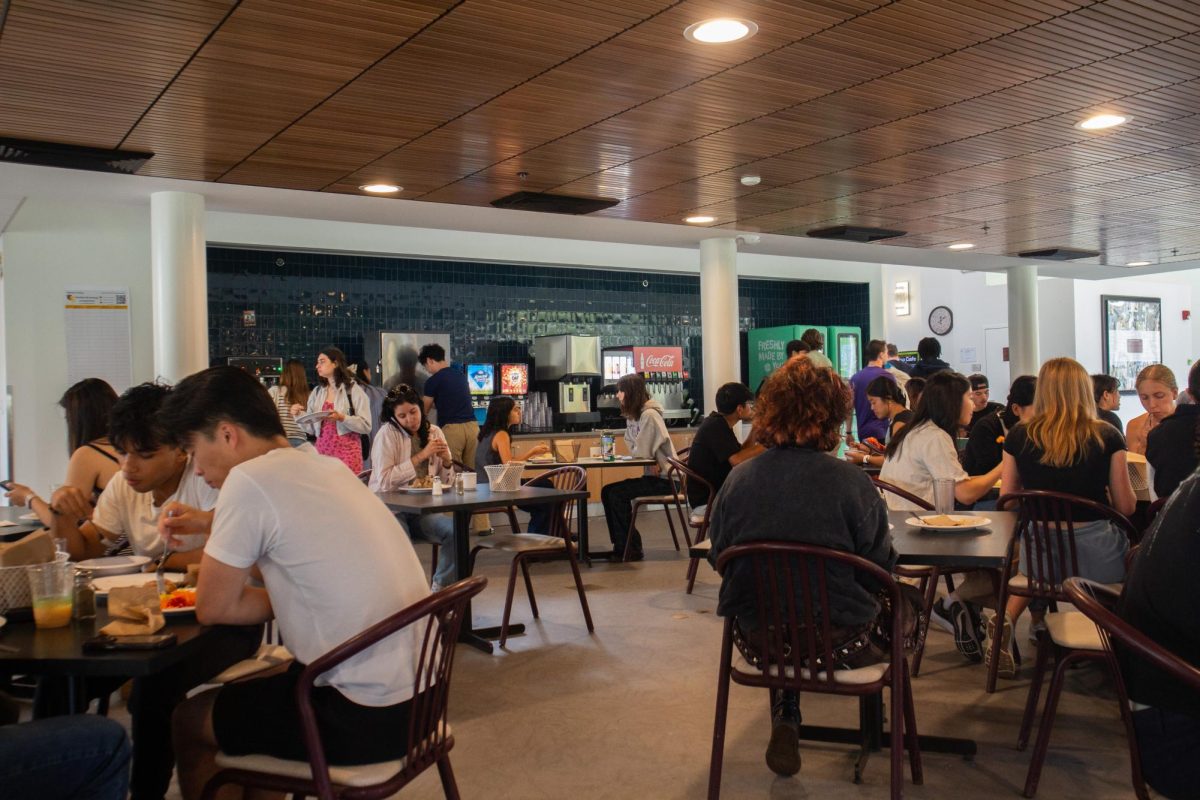Community members gathered on Nov. 3 in the Chapin Library’s gallery at a reception to celebrate its centennial anniversary and to view 100 Years, 100 Voices, an exhibition curated by Chapin Librarian Anne Peale.
100 Years, 100 Voices features approximately 100 objects from Chapin collections with descriptions — provided by students, alums, faculty, researchers, and community members — intending to bring the objects to life. The exhibit opened in September and will close in mid-January.
To open the reception, Head of Special Collections Lisa Conathan touched upon the timelessness of the Chapin Library. “This is really a wonderful time for us to look back and think back on the last 100 years, and also look forward and think about what the next 100 years are going to be like,” she said.
Speaking next, Peale emphasized the interactive process behind such a significant project. “The exhibit is all about all of you, our community, and about the people who inhabited this library for its first century,” she said.
Peale pointed to a tablet at the back of the Chapin Gallery commemorating Lucy Osborne, the first Chapin Librarian, and three other former librarians. A quote of unknown origin underneath their names reads, “They sought the best / nothing vulgar.”
“As a rare book and manuscript curator, I totally understand the sentiment behind it: the idea that we want the best possible things for our library, that we want to be sharing the most useful things with our students,” Peale said. “But it makes me smile every time because there are so many things in this library that are common, that are vulgar, that push the boundaries of what is socially appropriate. And in many ways, those are the most interesting things that we have here.”
Peale then shared that so far this semester, more than 35 class sessions have been held in the collections, and there have been a record number of over 300 research visits to the Weber Special Collections Reading Room.
This spring, a publication sharing the exhibit’s title will also be released. “It will be both digital and physical to really expand on this theme of hearing from folks for whom this collection has made a difference, both past and present,” Peale said, before thanking Alfred Clark Chapin of the Class of 1869 — the library’s first donor — as well as those who continue to contribute to the library today.
Construction for Stetson Hall began in October 1922 after Francis Lynde Stetson, Class of 1867, bequeathed funds to the College following his death in 1920. According to the Jan. 9, 1923 issue of the Record, the new building would include a stack room with the capacity to hold approximately 220,000 volumes and seven floors of steel racks, a Williamsiana Room containing literature of particular interest to those affiliated with the College, and the Chapin Room, home of the Chapin Library in its earliest state.
In the October 1921 issue of The Williams Alumni Review, Chapin separated his collection of more than 8,500 books into three broad categories: Incunabula, English Literature, and Americana. In his article “Old Books for the New Library,” he noted that the collection “also contains many Bibles, a large number of Prayer Books, Books of Hours, and … French, Spanish, [and] Italian literature.”
Chapin’s original donation included a manuscript copy of Dante’s Inferno produced in Florence in 1427, a copy of William Shakespeare’s first folio published in 1623, and a copy of the Algonquian Bible, the first Bible printed in British North America, printed in 1663, according to Peale and a June 25, 1923 issue of the Record. The collection was valued at over $750,000 in 1923, although the Record noted that such a gift was “of almost priceless value, both financially and in an educational way.”
Reception attendees echoed the “priceless value” of the Chapin Library 100 years later. “[The exhibit] has done a great job showing the diversity of experiences between individuals and the materials,” Special Collections Catalog and Metadata Librarian Yuzhou Bai told the Record. “I think the Chapin Library is more than the Collections — it’s also about the people it has been serving for the last 100 years.”
One individual served by the library is Jiwoo Han ’25, who provided a description for a 19th century printing block from Korea for the exhibit. Han began working at the Chapin Library her freshman year as a desk assistant. After learning that Han was an international student, Peale told her that some items from Korea had not yet been cataloged.
Han started transcribing the woodblocks, which had been purchased in 2014, that winter. “They were labeled as Chinese woodblocks, because a majority of them were actually written in Chinese characters [hanja], so there wasn’t really a way for someone who wasn’t trained to identify where they came from,” she told the Record. Han was able to transcribe the script and find an online archive managed by Seoul National University that had published digital copies of the same pages.
Over Winter Study during her sophomore year, Han expanded the project by traveling to Korea to visit different cultural heritage sites and Seoul National University’s Special Collections to view other woodblocks and printed copies in person. “The ultimate goal for the project is to create a guide for researchers where they could read about the woodblocks [and] get a general sense of what Korean printing history is like, what Korean literary history is like,” she said.
For 100 Years, 100 Voices, Peale reached out to a variety of individuals who interacted with items in the collections in ways similar to Han. “I said, ‘Okay, I’ll provide an account of how that block has led me to explore areas of Korea that I haven’t been in,’” Han said. “I was born and raised in Korea, but I didn’t really travel inside the country that much — and so that was a really refreshing chance. Working at the Special Collections led me to seriously consider rare books [and] museums as a career… It really changed the trajectory of my life.”
While putting together the centennial celebration, Peale emphasized stories like Han’s to showcase how Chapin Library’s initial objective — to serve as a place of research and exploration — remains central to its operation 100 years later. “The goals [remain] very much the same as when we were founded — to be a collection of rare books and manuscripts that support teaching and learning,” Peale told the Record. “I think the really exciting thing is that, as the College curriculum continues to grow and change, we have the ability to grow the Chapin collection to reflect that broadening of the educational mission of the College.”



















